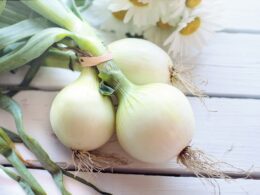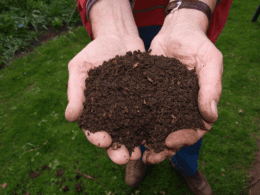Are you looking for a safe and cost-effective way to fertilize your garden? Look no further than mushroom compost. This organic material is a great soil additive that can promote healthy plant growth and increase moisture retention in your garden.
Whether you’re an experienced gardener or just starting out, using mushroom compost can bring exceptional results to your outdoor space. Using mushroom compost is a great option for those who want to avoid harsh chemicals and pesticides in their garden.
This natural fertilizer is made from a blend of wheat or rye straw, hay, manure, and other organic materials. It’s an environmentally friendly solution that can help you grow healthy and vibrant plants without harming the planet. With mushroom compost, you can have peace of mind knowing that you’re taking care of your garden in a safe and sustainable way.
Quick Takeaways
- Mushroom compost is a cost-effective and high alkaline natural fertilizer that can be used as a soil additive, for lawn care, and to increase moisture retention.
- It is important to mix mushroom compost equally with existing soil or let it sit for several months before use to reduce the risk of burning plants.
- Mushroom compost is good for tomatoes as it reduces the risk of blossom end rot and protects them from diseases, and it is also good for vegetable gardens as it increases production and aids in overall growth.
- Grass seed thrives in mushroom compost, making it a great fertilizer for lawns, and it offers a better blend and balance of nutrients than cow manure.
What is Mushroom Compost?
If you’re looking to boost your garden’s growth, mushroom compost – a mix of organic materials in which table mushrooms grow – can be a great soil additive, lawn care tool, and moisture retainer.
Mushroom compost is made of wheat or rye straw, hay, corn hulls and cobs, horse or chicken manure, grape scraps, and cottonseed, canola, or soybean meal. Mushroom farmers may add other organic materials to the base depending on the mushroom species they want to grow.
Mushroom compost production involves letting the mixture compost for about a month before use to kill off any seeds in the mixture and pathogens from the manure. The compost is cost-effective and has a high alkaline content that is beneficial for acid soils.
The nutrient composition of mushroom compost offers a better blend and balance of nutrients than cow manure, making it an effective fertilizer for gardens and lawns. However, fresh mushroom compost can burn plants sensitive to the alkaline and high salt levels, so it’s recommended to mix mushroom compost equally with existing soil or let it sit for several months before use.
Can Hair Compost Be Used to Boost the Garden?
Hair compost can indeed be used to boost the garden. When you compost your hair, it adds essential nutrients like nitrogen to the soil, promoting healthy plant growth. Additionally, hair compost improves soil structure, retains moisture, and assists in deterring pests. It’s a sustainable and eco-friendly way to nourish your garden naturally.
Usage and Benefits
You can greatly enhance the health and growth of your plants by incorporating mushroom compost into your soil. This organic material is a cost-effective and eco-friendly alternative to commercial fertilizers.
Here are three benefits of using mushroom compost in your garden:
-
Environmental Impact: Mushroom compost is made from organic materials such as straw, hay, and manure, which would otherwise end up in landfills. By using mushroom compost, you’re reducing waste and helping the environment.
-
Nutrient-rich: Mushroom compost contains a blend of nutrients that are essential for plant growth, such as nitrogen, phosphorus, and potassium. These nutrients help plants develop strong roots, vibrant foliage, and bountiful blooms.
-
Soil Health: Mushroom compost can improve the structure and texture of your soil, making it easier for plants to absorb water and nutrients. It can also increase the soil’s ability to retain moisture, reducing the need for frequent watering.
Incorporating mushroom compost into your soil can lead to healthier, more vibrant plants and a thriving garden.
Plants to Avoid
Be aware that certain plant species cannot tolerate the use of mushroom compost in their soil. While this organic material is a great way to boost your garden’s growth and production, it can cause harm to some plants. Common culprits that should be avoided include those from the brassica family, such as broccoli, cauliflower, and cabbage, as well as members of the nightshade family, like peppers, tomatoes, and eggplants.
If you are determined to grow these plants alongside others that benefit from mushroom compost, there are alternatives to consider. One option is to do soil testing to determine the pH levels of your soil and ensure that the compost does not cause nutrient imbalances or toxicity risks. Another option is to use companion planting, which involves pairing plants that have a symbiotic relationship and support each other’s growth. Additionally, soil amendments like gypsum or sulfur can help balance the pH levels and make the soil more suitable for sensitive plants. With proper garden planning and precautions, you can still enjoy the benefits of mushroom compost without harming your plants.
Can Mushroom Compost Be Used as a Growing Medium for Microgreens in Home Gardens?
Yes, mushroom compost can be used as one of the top microgreen growing mediums for home gardens. It provides an excellent source of nutrients for the microgreens to thrive and grow. The natural properties of the compost make it an ideal choice for cultivating healthy and vibrant microgreens.
Author’s Personal Experience
The author of the text, Justin, has found that incorporating mushroom compost into his garden has resulted in healthier plants and increased yields. He recommends using it as a soil additive to improve the overall quality of the soil.
Here are some gardening tips to help you get started with using mushroom compost:
- Mix the compost with the existing soil in equal parts to avoid burning your plants.
- Let the mixture sit for several months before planting to reduce the risk of burning plants.
- Use mushroom compost on vegetable gardens and lawns for optimal results.
By using mushroom compost, you can improve the health and yield of your plants while also being cost-effective. Incorporating it into your gardening routine is a great way to boost your garden’s growth and productivity.
With these simple tips, you can easily incorporate mushroom compost into your soil additives and enjoy a beautiful and bountiful garden.
Frequently Asked Questions
Are there any potential health risks associated with using mushroom compost?
You should be aware of potential health concerns when using mushroom compost. The compost may contain high levels of salts and other compounds that can be toxic to certain plants. However, if used properly, the compost is generally safe for gardening.
Can mushroom compost be used for indoor plants?
Looking for alternative fertilizers for your indoor gardening? Mushroom compost can be a great option! It’s cost-effective, natural, and can improve moisture retention. Just be sure to mix it with soil and avoid sensitive plants.
How long does it take for mushroom compost to break down in the soil?
Did you know that mushroom compost can take up to 6 months to fully break down in the soil? But don’t worry, this slow composting process means long-term soil enrichment and healthier plants for your garden.
Is it necessary to wear gloves or protective gear when handling mushroom compost?
Yes, it is recommended to wear gloves or protective gear when handling mushroom compost to avoid potential health risks. The compost may contain harmful bacteria or fungi that can cause skin irritation or respiratory issues.
Can mushroom compost be used in hydroponic systems?
Yes, mushroom compost can be used in hydroponic applications as it contains a well-balanced nutrient composition. However, it’s important to use a sterilized version to avoid introducing harmful pathogens into the system.









